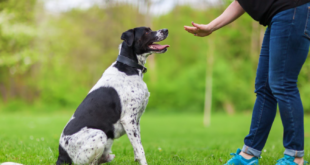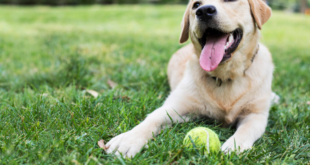Welcome, Dog Lovers! If you’re looking to equip your loyal companion with the skills to become a formidable protector, you’ve come to the right place. Dog protection training is a valuable investment for pet owners who want to ensure the safety of their loved ones and property. In this article, we will delve into the world of dog protection training and explore various aspects of this specialized training. Let’s embark on this exciting journey together!
When it comes to dog protection training, there are several important factors to consider. From breed suitability to training techniques, we will guide you through the process of transforming your furry friend into a trusty guardian. So, buckle up and get ready to explore the different facets of dog protection training, tailored to both experienced dog owners and those venturing into this realm for the first time.
Table of Contents
Guardians Unleashed: The Art of Dog Protection Training
The Right Breed Matters
When it comes to dog protection training, not all breeds are created equal. The genetic predisposition and temperament of a dog play a significant role in determining their suitability for this specialized training. Certain breeds, such as German Shepherds, Rottweilers, and Doberman Pinschers, are well-known for their protective instincts and make excellent candidates. However, it’s crucial to assess each individual dog’s personality and energy level to ensure they possess the necessary traits for protection training.
Dog protection training requires a breed that is intelligent, confident, and receptive to training. It’s essential to work with a reputable breeder or professional trainer who can help guide you in selecting the right breed for your unique needs. Remember, each dog is unique, and their individual characteristics should be considered when embarking on this training journey.
Training Techniques: Building Trust and Confidence
Building a strong foundation of trust and obedience is paramount in dog protection training. This specialized training requires a delicate balance of teaching your dog to discern potential threats and respond appropriately. Positive reinforcement techniques, such as reward-based training, are highly effective in cultivating the desired behaviors and responses.
Consistency and patience are key when training your dog to become a protector. Focus on teaching essential obedience commands, such as “sit,” “stay,” and “recall,” before progressing to more advanced protection training. It’s crucial to work with an experienced professional trainer who specializes in protection training to ensure the safety and well-being of both you and your four-legged friend.
Tools of the Trade: Equip Your Dog for Success
Protective Gear: Safety First
Dog protection training involves controlled scenarios to simulate real-life threats. As responsible pet owners, it’s essential to prioritize safety during training sessions. Protective gear, such as bite sleeves, bite suits, and muzzles, should be utilized to safeguard both the trainer and the dog.
Bite sleeves provide a way for your dog to practice targeting and biting without causing harm. These specialized sleeves are specifically designed to withstand the pressure exerted by a dog’s bite. Bite suits offer additional protection for trainers, covering the entire body and providing a realistic experience for the dog during training.
Training Aids: Unleashing Your Dog’s Potential
Different training aids can enhance your dog’s learning experience and overall performance. Leashes, harnesses, and collars designed for protection training provide control and better handling during exercises. Flexi-leads and body harnesses can be beneficial during off-leash training and scenarios that require maneuverability.
Additionally, consider incorporating dog toys designed for tug-of-war and interactive play into your training routine. These toys not only provide an outlet for your dog’s natural instincts but also strengthen their jaw muscles and encourage focus and determination.
Breaking it Down: Dog Protection Training Essentials
| Training Elements | Description |
|---|---|
| Obedience Training | Teaching essential commands and respect for authority forms the foundation of dog protection training. |
| Socialization | Exposing your dog to different environments, people, and animals is pivotal to their development as a protector. |
| Scent Detection | Training your dog to identify specific scents assists in locating intruders or missing individuals. |
| Alert Training | Teaching your dog to recognize suspicious behavior and alert you effectively without aggressive action. |
| Bite Work | Advanced training in controlled biting techniques to immobilize an aggressor while minimizing harm. |
Frequently Asked Questions
Q: Is dog protection training suitable for all breeds?
A: While any dog can benefit from obedience training, specialized protection training is best suited for breeds with protective instincts, high intelligence, and a trainable temperament.
Q: Can I train my dog for protection at home?
A: Basic obedience training can be done at home, but specialized protection training should be conducted under the guidance of an experienced professional to ensure safety and proper technique.
Q: Is protection training harmful or aggressive for my dog?
A: Protection training, when conducted responsibly and under professional guidance, does not promote aggression. Proper training focuses on controlled behaviors and discernment, rather than indiscriminate aggression.
Q: Can I use protection-trained dogs for personal security?
A: Yes, well-trained protection dogs can provide an added layer of security. However, it’s essential to follow legal requirements and local regulations regarding the use of trained protection dogs.
Q: How long does it take to complete dog protection training?
A: The duration of training varies depending on factors such as the dog’s age, breed, temperament, and the desired level of proficiency. On average, it can take several months to a year to achieve the desired results.
Q: Can my dog still be a friendly family pet after protection training?
A: Yes, with proper training and socialization, your dog can maintain a friendly and sociable nature while also exhibiting protective instincts when necessary.
Q: Are there any age restrictions for starting protection training?
A: While puppies can begin basic obedience training as early as eight weeks old, specialized protection training should typically commence when the dog is around one to two years old, once they have developed mentally and physically.
Q: How often should I practice protection training with my dog?
A: It’s important to commit to regular training sessions to reinforce and maintain your dog’s skills. Aim for structured training sessions at least three to four times per week.
Q: Is protection training expensive?
A: The cost of protection training varies depending on factors such as the trainer’s experience, duration of training, and the specific needs of your dog. It’s advisable to research and choose a reputable trainer who aligns with your budget and training goals.
Q: Can I integrate protection training with other dog sports?
A: Yes, many protection-trained dogs also participate in activities such as agility, obedience trials, and scent work. Ensure you communicate your goals to the trainer, who can guide you on incorporating other sports into your dog’s training regimen.
Unleash Your Dog’s Potential: Conclusion
Congratulations, Dog Lovers! You have now embarked on a journey to uncover the world of dog protection training. By equipping your loyal companion with the necessary skills and knowledge, you are nurturing their natural instincts to become a guardian. Remember, dog protection training requires your commitment and the guidance of experienced professionals to ensure safety and success.
To further expand your canine horizons, explore our other articles on dog nutrition, health, training, and more. Together, let’s empower our four-legged friends to become the dedicated protectors they were born to be!
 Treat For Dog – Brain Training for Dogs, Dog Training & Obedience Discover Treat For Dog and get your pup on the path to smarter, happier, and healthier living with brain training for dogs.
Treat For Dog – Brain Training for Dogs, Dog Training & Obedience Discover Treat For Dog and get your pup on the path to smarter, happier, and healthier living with brain training for dogs.



